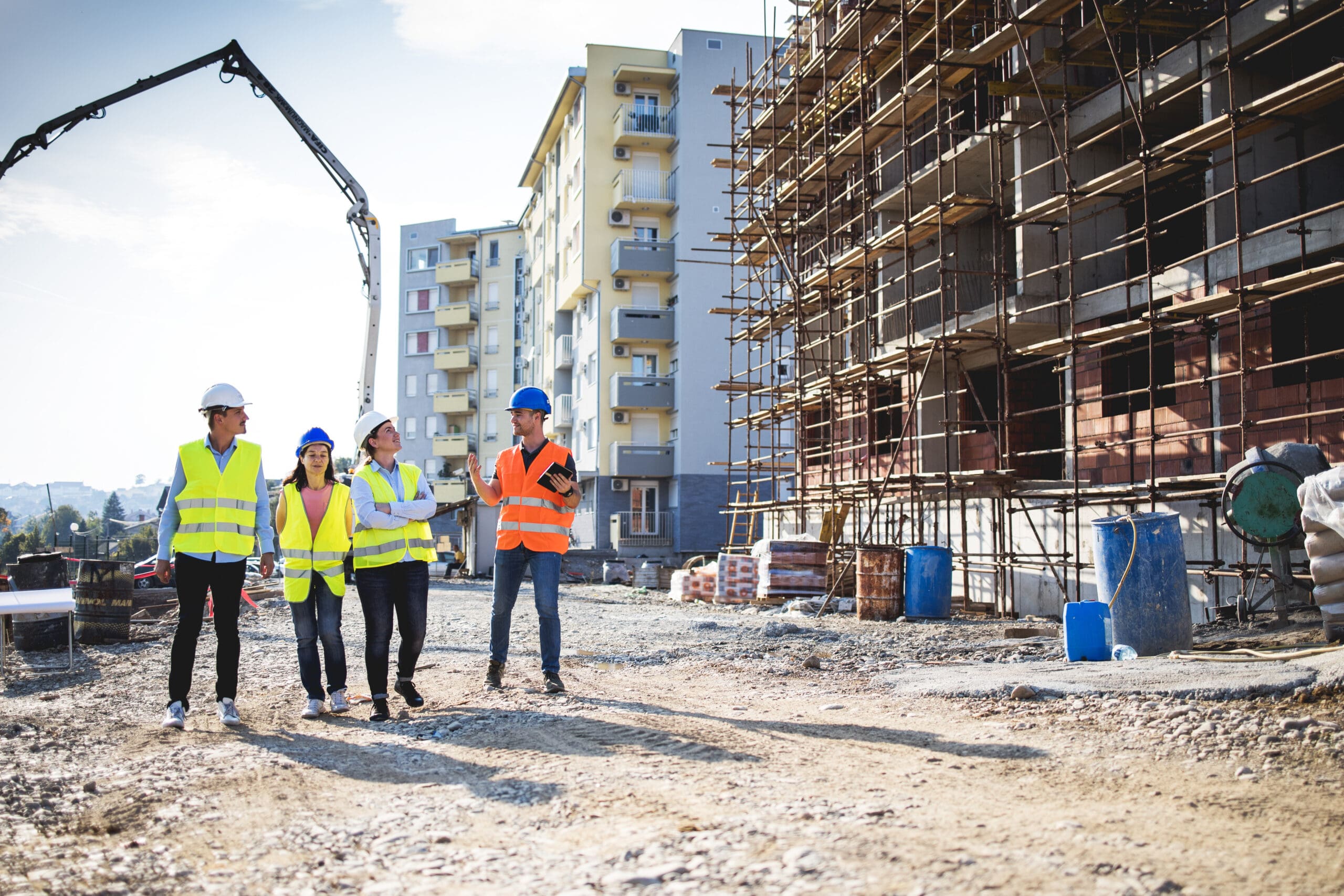Managing Risk in the Construction Industry
Construction projects are inherently complex, involving numerous stakeholders, materials, and processes. With so many moving parts, risks are inevitable, ranging from economic risks and subcontractor performance issues to design errors and weather-related challenges. For owners, developers, and construction contractors, effectively managing risks in construction is critical to completing projects on time and on budget.
By identifying potential risks early and implementing the right risk mitigation strategies, companies can minimize delays, reduce liability, and better protect their investments. This guide explores key risks in construction, their associated impacts, and the insurance solutions designed to protect your projects.
Types of Construction Risk
Construction risks can be categorized into several broad areas, each with unique challenges and consequences. Here’s a breakdown of some of the most common risks within the industry:
- Economic risks: Market fluctuations, material shortages, and unexpected cost overruns can derail budgets and impact profitability. Labor shortages and wage inflation can increase project costs.
- Project management and contractual risks: Poor planning, mismanagement, or unclear contracts can result in disputes and financial losses. Unforeseen site conditions, such as unstable soil or hidden utility lines, can delay construction and increase costs.
- Design errors and faulty work: Miscalculations, incorrect specifications, and flawed designs can lead to structural failures and costly rework. Design errors can also cause delays and increase liability exposure.
- Subcontractor and supplier risk: Unreliable subcontractors or supply chain disruptions can create significant delays. Subcontractor risk includes poor workmanship, financial instability, and failure to meet safety standards.
- Worker injuries and unsafe conditions: Worker injuries are a significant concern due to often hazardous work environments. Dangerous work conditions increase liability and can lead to legal and financial consequences.
- Third-party injury and property damage: Accidents on or near the job site can lead to third-party injuries and property damage—resulting in costly lawsuits.
- Environmental and weather-related risks: Environmental risks, like pollution or hazardous material exposure, can lead to regulatory fines and cleanup costs. Weather risks, such as hurricanes, floods, and extreme temperatures, can cause costly delays and damage materials.
Identifying & Mitigating Risk
To protect projects from these risks, owners, developers, and contractors should adopt a construction risk management approach that includes the following:
- Conducting risk assessments: Identify potential hazards at the planning stage. Then, assess the likelihood and impact of each potential risk.
- Implementing strong contracts and project controls: Contracts should clearly define responsibilities and risk allocation. Performance bonds, warranties, and retention clauses should also be used to help protect against financial losses.
- Ensuring subcontractor and supplier reliability: Vet subcontractors for financial stability, capacity, experience, and safety performance. Consider using P&P bonds or Subcontractor Default Insurance (SDI) to mitigate subcontractor risk.
- Enhancing safety and compliance measures: Implement rigorous safety protocols to help prevent worker injuries. Train employees about best practices and enforce compliance with OSHA standards. Finally, be prepared when accidents occur with a well thought-out emergency response plan.
- Using quality control and inspections: Regular site inspections help detect issues early. Employ quality control procedures to help minimize design errors and faulty work.
- Developing contingency plans: Plan for unexpected weather risks, supply chain disruption, and economic fluctuations. Set aside reserves for emergency repairs or delays.
Insurance Solutions
Insurance is crucial in mitigating construction risk by providing financial protection against unforeseen events. Here are some key policies to consider obtaining for your business:
1. Workers’ compensation insurance
Workers’ compensation insurance is essential for covering workers who are injured on the job and related medical expenses. This policy provides wage replacement for injured employees, helping ensure financial protection for workers and employers.
2. General liability and excess liability insurance
General liability insurance protects against claims involving third-party injury and property damage. Excess liability insurance provides additional financial protection in the case of costly lawsuits, as its coverage limits extend beyond standard policies.
3. Builders’ risk and contractors’ equipment insurance
These policies cover theft and damage to building materials and equipment. They help recover losses caused by fire, vandalism, severe weather, or unforeseen incidents that could disrupt a project’s progress.
Learn More About Builders Risk Coverage4. Professional liability insurance
Professional liability insurance is most commonly known as Errors and Omissions (E&O) insurance. It covers claims related to design errors and professional negligence and help protect construction firms from lawsuits arising out of project mismanagement or incorrect specifications.
5. Pollution legal liability and contractors’ pollution liability
These policies provide coverage for environmental risks, such as hazardous material exposure. They help cover cleanup costs, regulatory fines, and legal defense in pollution-related claims.
6. Subcontractor risk protection (P&P bonds or SDI)
Performance & Payment (P&P) bonds help ensure subcontractors fulfill their contractual obligations, reducing subcontractor risk. Alternatively, subcontractor default insurance (SDI) provides financial protection if subcontractors fail to complete their work.
Learn More About SDI Coverage7. Automobile liability insurance
For contractors using company vehicles to get to and from jobs, commercial auto liability insurance covers property damage and bodily injury caused by accidents involving those vehicles. This policy is crucial for businesses transporting materials and workers between job sites.
8. Force majeure clauses
While more of a contractual measure as opposed to an insurance policy, a force majeure clause helps mitigate financial losses caused by weather risks, natural disasters, or unexpected shutdowns. This provision helps protect construction firms from delays due to events beyond their control.
Developing a Risk Management Plan
An effective construction risk management plan is essential for reducing liabilities and improving project outcomes. This includes the following:
- Regular training and communication: Ensuring all stakeholders understand risk protocols and safety measures
- Thorough documentation: Keeping detailed records of contracts, inspections, and insurance coverage
- Collaboration with risk and insurance professionals: Partnering with insurers and legal advisors to optimize coverage and risk strategies
Owners, developers, and contractors can protect their projects from financial losses, legal disputes, and operational setbacks by proactively identifying risks and securing appropriate insurance solutions.






